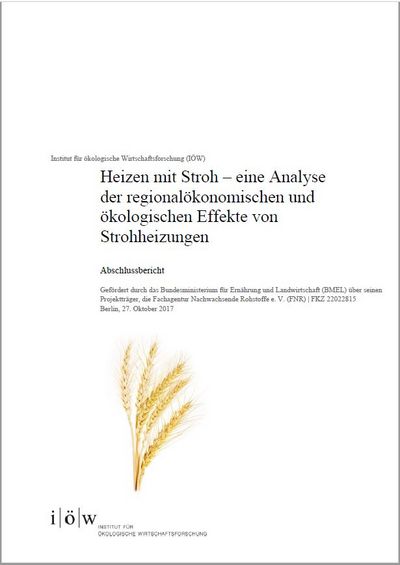Heating with straw An analysis of regional economic and ecological effects of straw fired-heating plants
Sources of bioenergy play a central role in renewable heating. To date, the predominant material used for heating is wood. By-products and residuals of agricultural production also have a large and untapped potential. Particularly cereal straw has been rarely used in energy production.
The project “Heating with straw” analysed which regional economic effects can be expected from the energetic use of straw, particularly in rural areas. Moreover, environmental impacts of straw production, harvest, transport and combustion were considered.
The project results show, that the energetic use of straw has the potential to create value added and employment effects at the regional level. In order to operate economically efficient, straw-fired heating plants should only be installed in areas where straw is not already used otherwise (for livestock farming or material use). If this condition is fulfilled, the installation and operation of straw-fired heating can create regional economic effects. The more local players are involved along the value chain, the higher the regional economic benefits. In comparison to fossil reference systems, straw-fired heating plants are able to significantly contribute to the reduction of greenhouse gas emissions and acidification. This is the case for plants located in regions with sufficient straw potential as a prerequisite for the balance of humus. Straw-fired power plants can potentially increase eutrophication to a greater extent than fossil reference systems. This risk can be reduced by returning the ash to the field. Taken together, the ecological effects of the energetic use of straw can be considered as positive, particularly in consideration of the few competing uses that are in place today.



